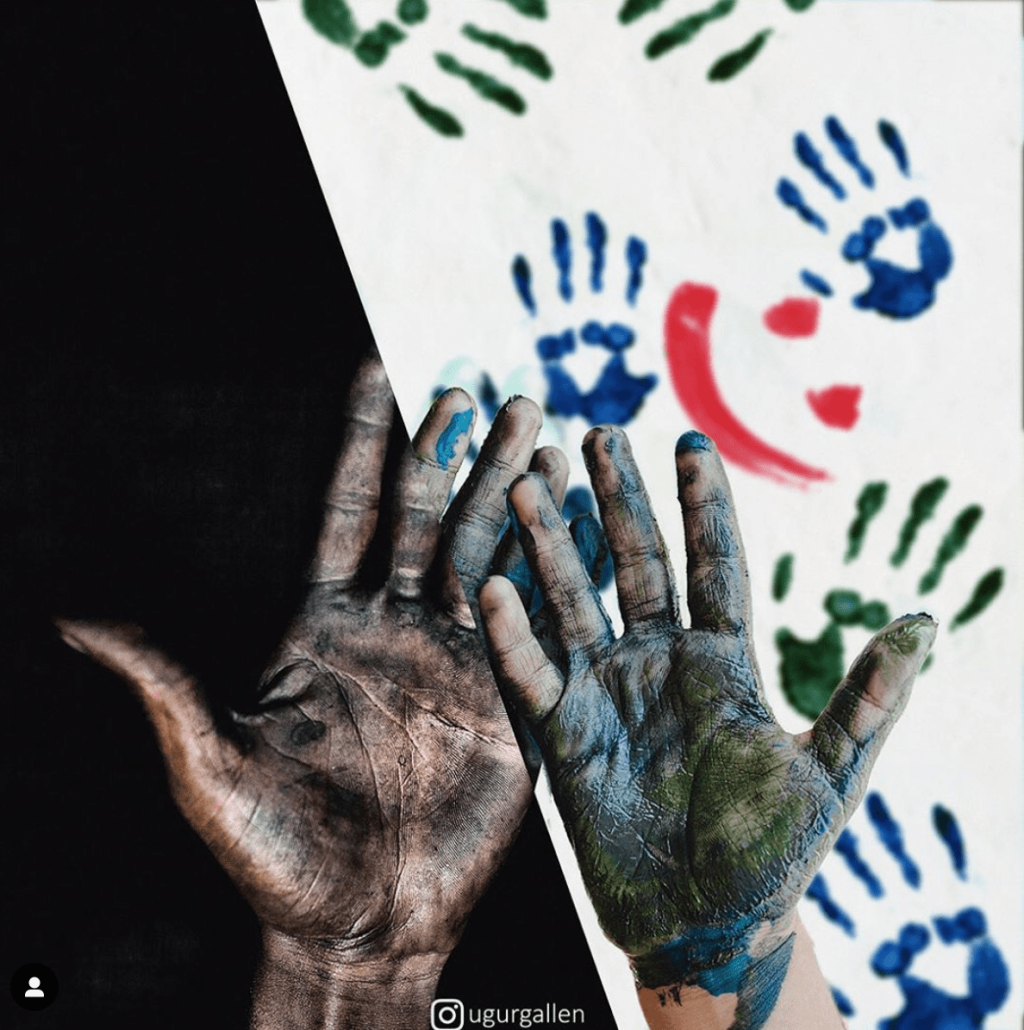Art can make people see things from a new perspective. Turkish artist Uğur Gallenkuş is based in Istanbul, Turkey and is known for his photo collages.
A digital artist, Gallenkuş focuses on poverty, war zones, and refugees. He uses his art to spark conversations between their lives and those of people who are more privileged.
Here are 21 of his most powerful works.
21. Turkish-backed Syrian rebels
https://www.instagram.com/p/B6DKUHygM84/
20. Refugee in the Aegean Sea
https://www.instagram.com/p/B8VzrHogMNG/
19. Child Laborer vs. Student
https://www.instagram.com/p/B8LnH0Pgs_T/
18. Asleep vs. Resting Migrant
https://www.instagram.com/p/B8TK8NEAZTI/
17. Rio vs. Military Aircraft
https://www.instagram.com/p/B751Z6VACKR/
16. Student vs. Arrestee
https://www.instagram.com/p/B7lhDWPgmFb/
15. Together vs. Separate
https://www.instagram.com/p/B7qNxMBAiAk/
14. Carnival vs. War Zone
https://www.instagram.com/p/B7V84kag73t/
13. Bullet vs. Flower
https://www.instagram.com/p/B7D9glEAH67/
12. Santa vs. Protests
https://www.instagram.com/p/B6xM4pPAWr9/
11. Football Players vs. Criminals
https://www.instagram.com/p/B6sk2-eAQZD/
10. Grief vs. Relaxation
https://www.instagram.com/p/B6iRc_xAFdG/
9. Love Wall vs. War Wall
https://www.instagram.com/p/B6SwIgYAvHw/
8. Hell on Earth vs. Paradise on Earth
https://www.instagram.com/p/B6LPurNAoXl/
7. Child at School vs. Child Soldier (?)
https://www.instagram.com/p/B6A05s5g4tH/
6. Ice Cream vs. Bomb Cloud
https://www.instagram.com/p/B57abNpAA6Z/
5. Excess vs. Crowd
https://www.instagram.com/p/B5ztaABg-m-/
4. Fine Art vs. Comrades
https://www.instagram.com/p/B5Ks_Y7A9PS/
3. Wasteland vs. Forest
https://www.instagram.com/p/B44Zvr2gr7g/
2. History vs. Regular Day
https://www.instagram.com/p/B42J8CXgWCj/
1. Girl With a White Headband
https://www.instagram.com/p/B4haHjZABNm/
These photographs are quite jarring and thought-provoking. You can view more of the artist’s works here.
In the meantime, how did these collages make you feel? Stir something inside you haven’t felt in a while?
Please share your thoughts in the comments!






